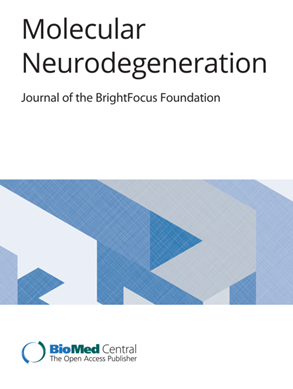The role of n-3-derived specialised pro-resolving mediators (SPMs) in microglial mitochondrial respiration and inflammation resolution in Alzheimer’s disease
IF 14.9
1区 医学
Q1 NEUROSCIENCES
引用次数: 0
Abstract
Alzheimer’s disease (AD) is the most common form of dementia globally and is characterised by reduced mitochondrial respiration and cortical deposition of amyloid-β plaques and neurofibrillary tangles comprised of hyper-phosphorylated tau. Despite its characterisation more than 110 years ago, the mechanisms by which AD develops are still unclear. Dysregulation of microglial phagocytosis of amyloid-β may play a key role. Microglia are the major innate immune cell of the central nervous system and are critical responders to pro-inflammatory states. Typically, microglia react with a short-lived inflammatory response. However, a dysregulation in the resolution of this microglial response results in the chronic release of inflammatory mediators. This prolongs the state of neuroinflammation, likely contributing to the pathogenesis of AD. In addition, the microglial specialised pro-resolving mediator (SPM) contribution to phagocytosis of amyloid-β is dysregulated in AD. SPMs are derivatives of dietary n-3 polyunsaturated fatty acids (PUFAs) and potentially represent a strategic target for protection against AD progression. However, there is little understanding of how mitochondrial respiration in microglia may be sustained long term by n-3-derived SPMs, and how this affects their clearance of amyloid-β. Here, we re-evaluate the current literature on SPMs in AD and propose that SPMs may improve phagocytosis of amyloid-β by microglia as a result of sustained mitochondrial respiration and allowing a pro-resolution response.n-3衍生的特殊促溶解介质(SPMs)在阿尔茨海默病小胶质线粒体呼吸和炎症消退中的作用
阿尔茨海默病(AD)是全球最常见的痴呆症形式,其特征是线粒体呼吸减少,淀粉样蛋白-β斑块和由过度磷酸化的tau组成的神经原纤维缠结在皮层沉积。尽管早在110多年前就被描述为阿尔茨海默病,但其发病机制仍不清楚。淀粉样蛋白-β的小胶质吞噬功能失调可能起关键作用。小胶质细胞是中枢神经系统的主要先天免疫细胞,是促炎状态的关键反应者。通常,小胶质细胞的反应是短暂的炎症反应。然而,这种小胶质细胞反应的失调导致炎症介质的慢性释放。这延长了神经炎症的状态,可能有助于AD的发病机制。此外,参与淀粉样蛋白-β吞噬的小胶质特化促溶解介质(SPM)在AD中失调。SPMs是膳食n-3多不饱和脂肪酸(PUFAs)的衍生物,可能是预防AD进展的战略靶点。然而,对于n-3衍生的SPMs如何长期维持小胶质细胞中的线粒体呼吸作用,以及这如何影响它们对淀粉样蛋白-β的清除,人们知之甚少。在这里,我们重新评估了目前关于SPMs在AD中的文献,并提出SPMs可能通过持续的线粒体呼吸改善小胶质细胞对淀粉样蛋白-β的吞噬,并允许前溶解反应。
本文章由计算机程序翻译,如有差异,请以英文原文为准。
求助全文
约1分钟内获得全文
求助全文
来源期刊

Molecular Neurodegeneration
医学-神经科学
CiteScore
23.00
自引率
4.60%
发文量
78
审稿时长
6-12 weeks
期刊介绍:
Molecular Neurodegeneration, an open-access, peer-reviewed journal, comprehensively covers neurodegeneration research at the molecular and cellular levels.
Neurodegenerative diseases, such as Alzheimer's, Parkinson's, Huntington's, and prion diseases, fall under its purview. These disorders, often linked to advanced aging and characterized by varying degrees of dementia, pose a significant public health concern with the growing aging population. Recent strides in understanding the molecular and cellular mechanisms of these neurodegenerative disorders offer valuable insights into their pathogenesis.
 求助内容:
求助内容: 应助结果提醒方式:
应助结果提醒方式:


